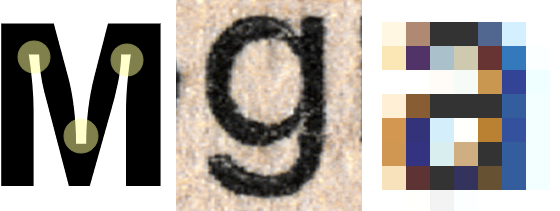Type rendering: the design of fonts for the web

Yours truly, writing for Typekit:
We have a tendency to think of fonts as one-size-fits-all, because that’s largely how personal computing has taught us to think. On the web, in rich email, or in a word processor, we have the ability to scale fonts to sizes that were never intended by the designers of those fonts. Historically, fonts have been designed with specific (and limited) sizes and contexts in mind. In fact, in metal type the word “font” means a particular typeface at a specific size — a “font of type” meant a drawer full of leaden letters.
Type designers, ideally focused on creating the most beautiful and meaningful forms possible, have always had to consider the means of production as they design and produce typefaces — but rarely if ever have type designs been used in such a broad array of contexts as they are today. Different media (screen/print), viewing formats (projector/laptop/phone), and rendering engines exercise type in a variety of ways, and it’s extremely difficult to prepare a typeface to handle all of these situations at once.